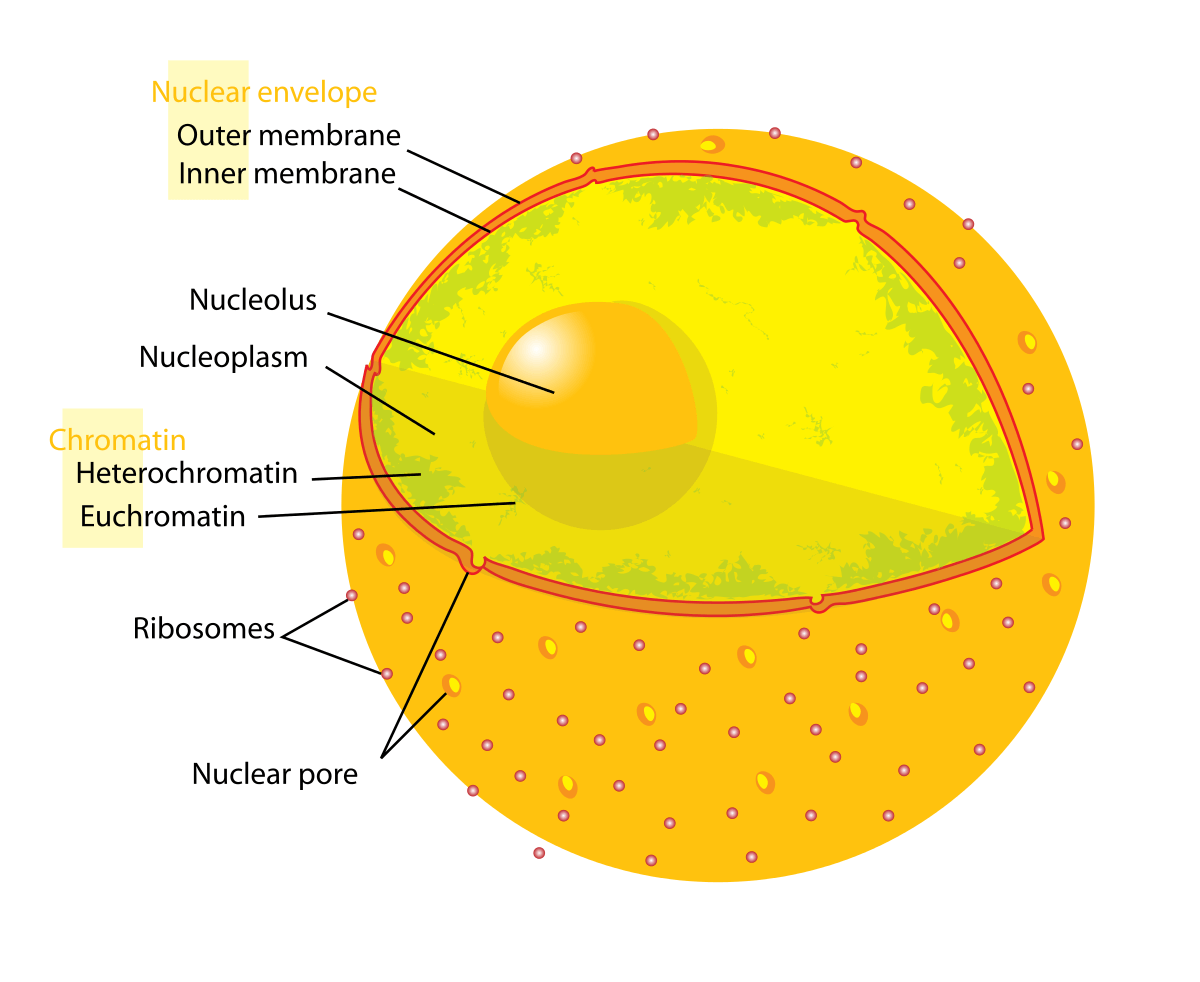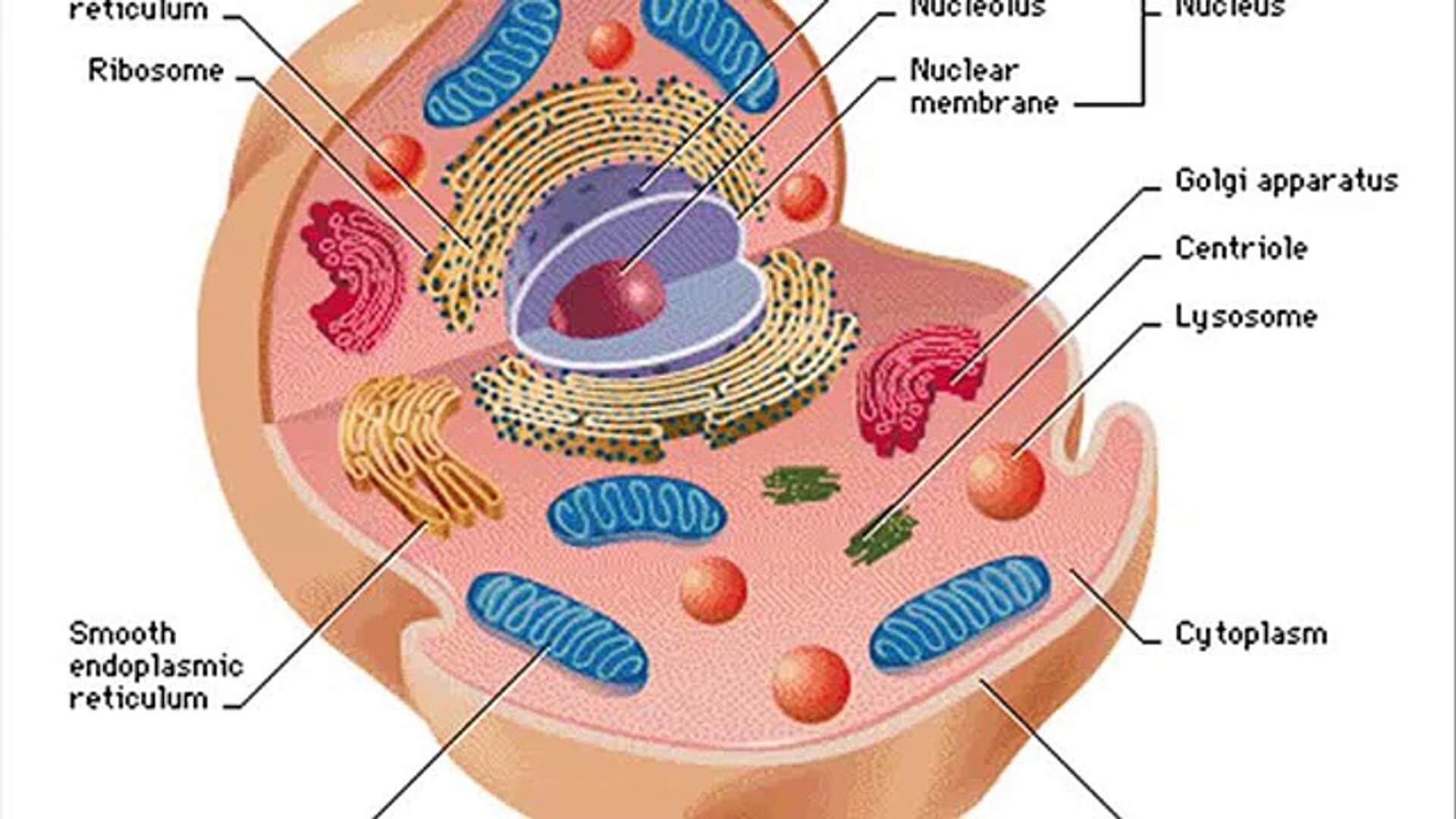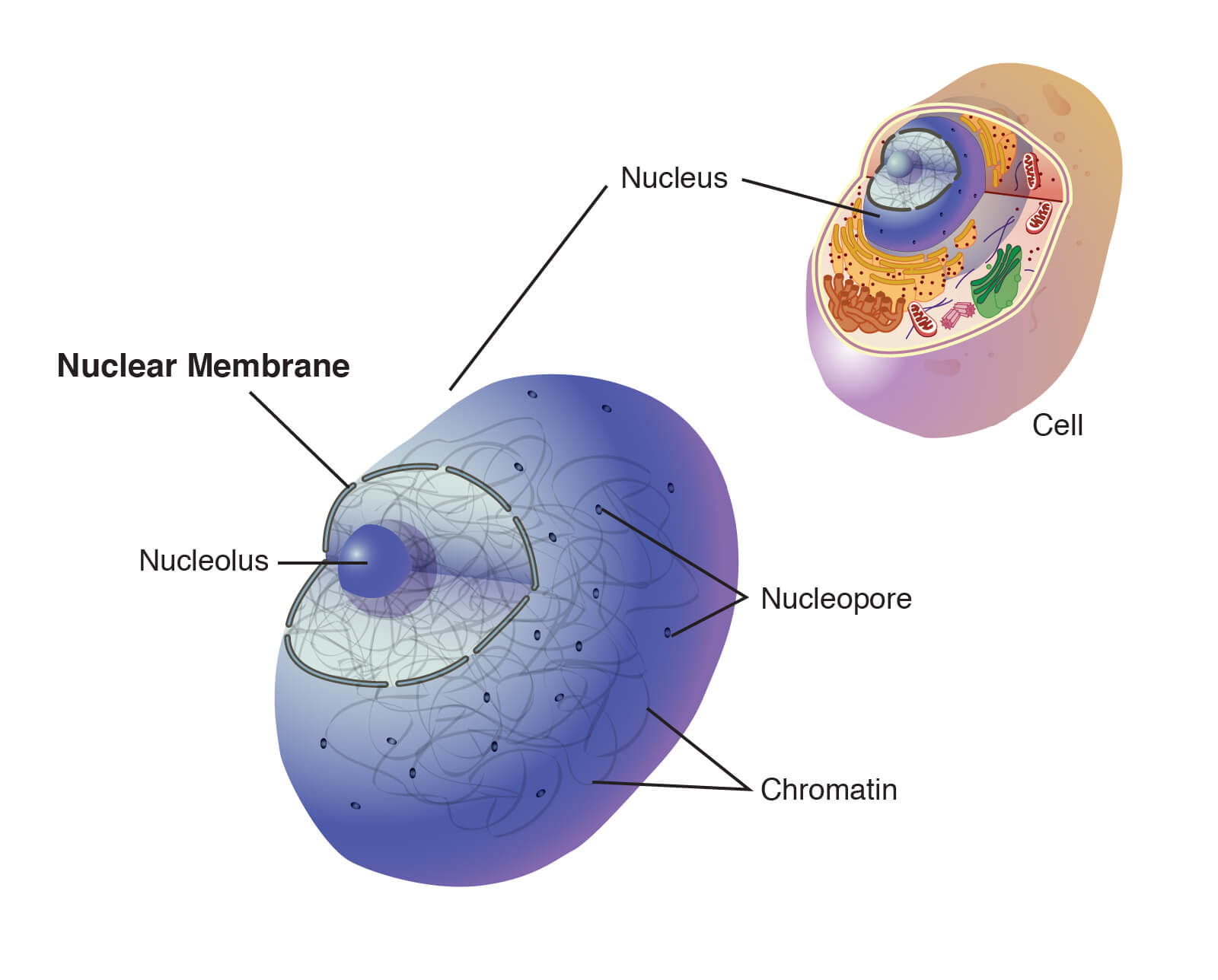Explore the intriguing features of the nuclear membrane, from its composition to its vital role in cellular functions. #NuclearMembrane #CellBiology #ScienceFacts
The nuclear membrane or nuclear envelope belongs to the endomembrane system of the cell. It is a complex porous structure that covers the nucleus. The nuclear membrane is composed of two concentric layers that have pores. These layers fuse and form nuclear pores that are perforations of the membrane. The main function of the nuclear pores is to allow the communication of the cellular cytoplasm with the interior of the nucleus. Between both membranes or concentric layers there is a distance between 20 and 40 nanometers. There is the perinuclear cistern. The main function of the nuclear membrane is that the chromosomes can be fixed inside the nucleus.

Characteristics Of Nuclear membrane
1. Structure: Membranes
These membranes are not continuous but have interruptions called pores. These pores allow the exchange of material between the cytoplasm and the nucleoplasm. The nuclear membrane is composed of 2 lipid bilayers that will be described below:
External membrane: This is the membrane that connects with the cytoplasm. The outer part of this membrane is called the nuclear outer lamina. This sheet is constituted by proteins. It can be presented as a continuous layer, sometimes it looks like a honeycomb.
Inner membrane: Separates the nucleoplasm with the nuclear space. It has contact with nuclear material.
2. Ribosomes
Ribosomes are complex molecular machines found in all living cells, responsible for protein synthesis. They play a crucial role in the process of translation, where the genetic information encoded in the DNA is converted into functional proteins. Ribosomes are composed of two main subunits, typically designated as the large and small subunits.
3. Chromatin
It is present in the inner layer of the nuclear membrane. There the DNA and proteins are attached. There are 2 types of chromatins:
- Heterochromatin
- Eucromatin

4. Cistern or perinuclear space
It is the layer that is between the other 2 membranes. It forms a unit with the rough endoplasmic reticulum.
5. Nuclear pore complex
They are communication doors between the nucleus and the cytoplasm. They cross the nuclear membrane and reach the cytoplasm. Each pore is made up of more than 50 proteins. It is the set of these proteins that makes up the pore complex.
6. Nucleoplasm
The nucleoplasm has direct contact with the inner layer of the nuclear membrane through the nuclear lamina. Within this nucleoplasm are the chromatin fiber and the nucleolus.
7. Cytoplasm
It has direct contact with the outer membrane of this nuclear envelope.
8. Nuclear sheet
This sheet is formed of intermediate filaments. It has the function of support for the nuclear envelope. It has no continuity in the pores but is interrupted. This lamina, in certain cells and during the prophase of mitosis, disintegrates and reconstitutes in the terophase.

9. Dynamic
During cell division, the cell envelope can remain or disappear depending on the living being to which the nuclear membrane belongs. In closed mitosis, the nuclear membrane is maintained, whereas in open mitosis it disappears and reforms when the division of the genetic material ends.
10. What is the function of the nuclear membrane?
The nuclear membrane has several main functions:
- Transcribes DNA in RNA.
- Translate RNA into proteins.
- They prevent the exit of DNA and the entry of cytoplasmic enzymes.